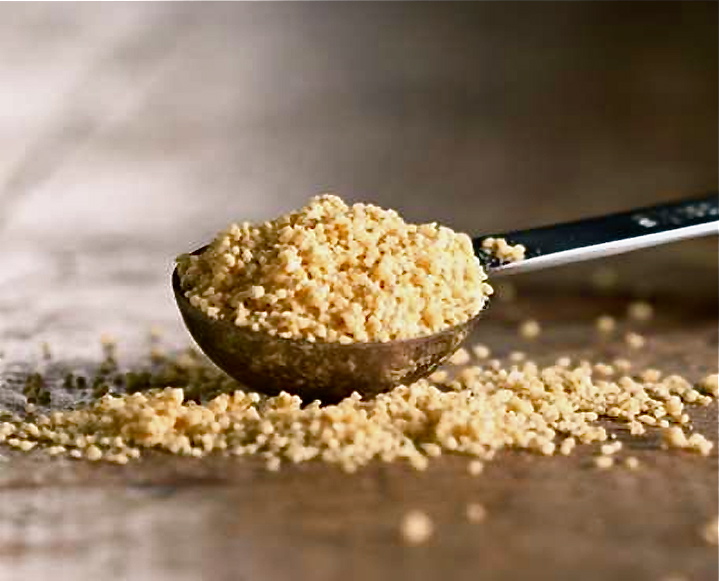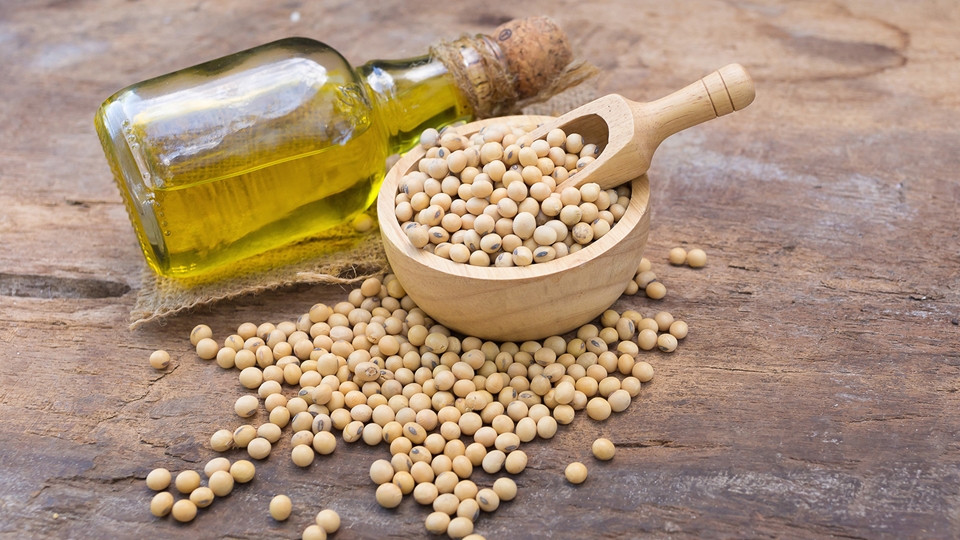Phospholipids
Phospholipids or phosphatides are glycerides that have phosphoric acid and an alcohol in their structure. Phospholipids are the main building blocks of lecithin. All fats and oils and fatty substances in food contain some phospholipids. The lowest amount of phospholipids is found in animal fats such as pork fat and beef tallow. In a number of crude vegetable oils such as cottonseed, corn and soybean, it is possible that phospholipids are present in amounts of 2 to 3%. Fish, crabs and molluscs have approximately 0.7% of phospholipid in their muscle tissue. The most important sources of phospholipid can be found in animal sources such as eggs and in plant sources such as soybean oil, canola, sunflower, corn, etc. To name them, the name of the alcohol used is mentioned after the word phosphatidyl. Some important phospholipids are phosphatidylethanolamine, phosphatidylcholine, phosphatidylserine and phosphatidylinositol. In phospholipids, the alcohol and phosphoric acid parts are polar, while the part containing fatty acids are non-polar. In this sense, they are called amphipathic compounds. Phospholipids easily absorb water due to having a polar or hydrophilic part in their molecule, which is used to separate them from oil. The presence of phospholipids or phosphatides in oil causes a large amount of triglycerides to be emulsified with water during oil refining and production and is lost. In addition, under the high heat of the production process, they cause darkening of oil paint. The presence of polarity and non-polarity in phospholipid molecules causes them to have surface activity properties and by reducing the interfacial tension of oil and water phases, they help to form an emulsion and its stability in the food system. Phosphatidylcholine is an oil-in-water emulsifier. Phosphatidyl ethanolamine and phosphatidyl inositol have water-in-oil emulsifying properties. Because lecithin is a combination of the mentioned phospholipids, it can be used for both types of emulsions, provided that other conditions such as pH, salt concentration and oil-to-water ratio are selected appropriately.
Table 2: Percentage composition of lecithins (base without oil)
Phospholipid sources
Soybean oil is the most important source of phospholipids. The phospholipid separated from this oil is marketed under the name of soy lecithin; which is basically a mixture of different phospholipids and some other substances. This material is widely used in the food industry. Although soy has been the main source of lecithin worldwide, due to the increasing demand for non-GMO (genetically modified organism) lecithin, other sources are now being sought, including sunflower and canola. Although it has been shown in various scientific sources and tests that GMO soy lecithin is equivalent to non-GMO lecithin, the European market prefers non-GMO lecithin. In the last few decades, lecithin has become more important as a neutral substance and food supplement. Almost all food lecithin produced in the world is derived from soybean and other vegetable oils. After soy lecithin, rapeseed is the second most important source of vegetable lecithin, and the third place belongs to sunflower. Egg yolk has become important as a source of lecithin with unique and different functional properties from soy lecithin. With great advances in biotechnology and genetic engineering, microbial sources (especially bacteria and yeast) have become increasingly important in the synthesis of phospholipids and are considered as new and future sources of phospholipids.
Natural sources of lecithin
The main natural and unrefined sources of lecithin are: soy (1.48 to 3.08%), peanuts (1.11%), calf liver (0.85%), wheat (0.61%), oatmeal (0.65%), eggs (0.39%). , human spinal cord (6 to 10%) and human brain (4 to 6%) in fresh material, it should be noted that some of the mentioned materials have the ability to be commercialized. Among refined materials, especially concentrated sources of lecithin can be: dry and powdered egg yolk (14-20%), natural egg yolk (7-10%), wheat germ (2.82%), soybean oil (1.8% to 2.65%). ). Other vegetable oils have an average of 0.5% lecithin. Unlike animal phospholipids, soy phospholipids do not contain cholesterol.
Some physical properties of lecithin
Commercial raw soy lecithin is a brown to light yellow fatty substance with a liquid consistency. Its density is 0.97 g/ml. Its consistency is mainly determined by its oil, fatty acids and moisture. Refined lecithin is practically odorless and has a mild taste. It is soluble in aliphatic and aromatic hydrocarbons, including halogenated hydrocarbons. However, it is only partially soluble in aliphatic alcohols. Pure phosphatidylcholine is soluble in ethanol. Unlike glycerides, commercial lecithin is not resistant to high heat, and when it is heated at 80°C in anhydrous (dry) conditions, it starts to darken and decomposes when the temperature increases to 120°C.
Some chemical properties of lecithin
Lecithin is a multifunctional surfactant. Each molecule has two faces. The fatty acid part of the molecule that is attracted to fats (lipophilic) and the opposite side that is attracted to water (hydrophilic). Because of this dual nature, lecithin molecules tend to position themselves at the boundary between immiscible substances such as oil and water. Phospholipids play a role in most membrane processes and generally play an important role in body health. Phosphatides are divided into two groups, hydrophilic and hydrophobic. Hydrophilic phosphatide is separated by adding water, but hydrophobic phosphatide is usually separated by


